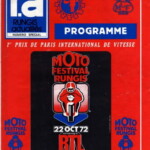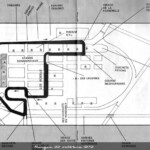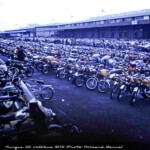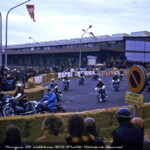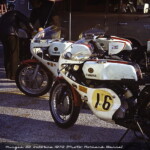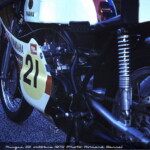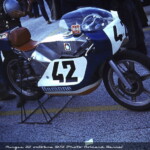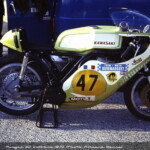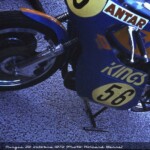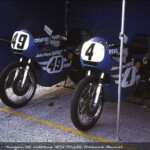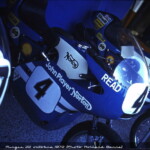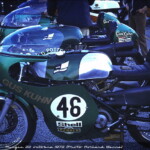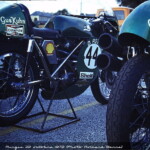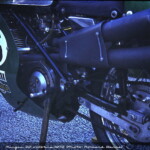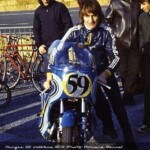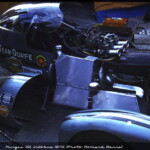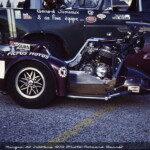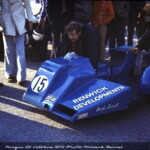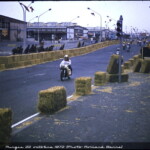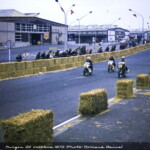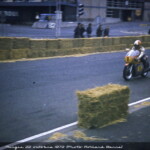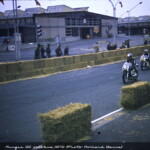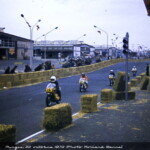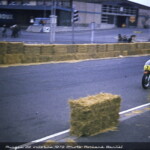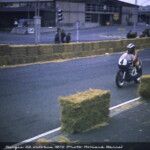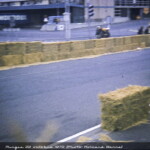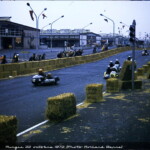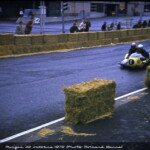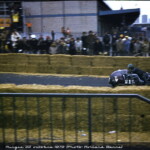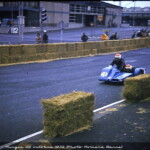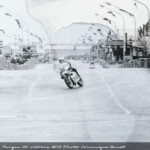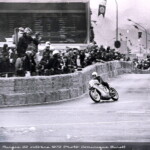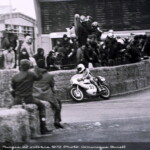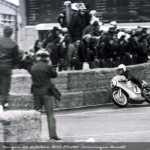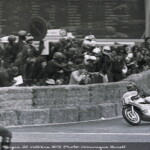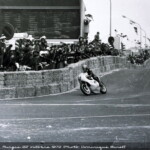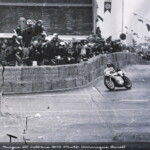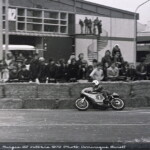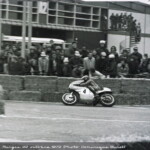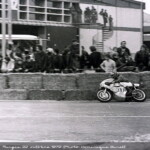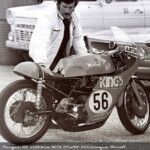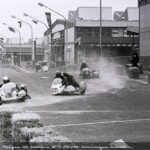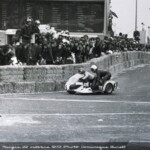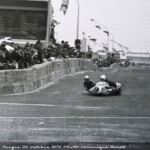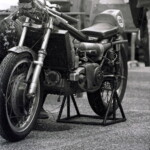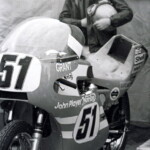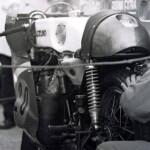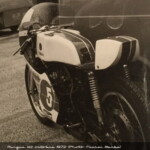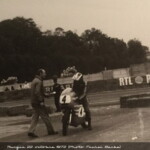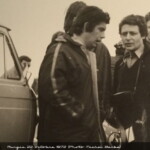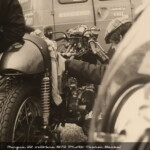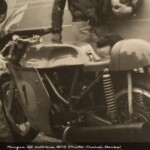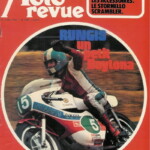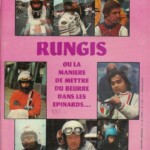Paris had its motorcycling Grand Prix. Its history is not uninteresting since, quite directly, it led to the construction of the Carole circuit.
1972. The post-68 years when motorcycles rhymed with freedom. A young and positive image (this has changed a lot) which obviously did not leave the media of the time indifferent, starting with the radio stations which continued to ride a wave initiated by “Salut les amis” or the magazines for “young people”. » who combined motorcycles and music with some success (Hit Magazine)…
Media stunt or not, October 22, 1972 saw the organization of the 1st Paris International Speed Prize in Rungis, located in the southern suburbs of Paris, with the help of the radio RTL and newspaper France-Soir. An organization which brought together the vast majority of star drivers from the world championship to come and ride in the Parisian suburbs, on a rather dangerous circuit with no real interest other than being close to the spectators. THE significant departure and arrival bonuses for the time (1700 francs or 1500 euros for a first row qualification, 10 francs for the first to finish, or 000 euros today) are undoubtedly not unrelated... nothing for today, but very important for the era.
After this unique weekend, which unfortunately saw the death of Dave Simmonds, 125 World champion in 1969, in the fire of the caravan of Jack Findlay (Australian driver and star of the film Continental Circus by Jêrome Laperrousaz) After the event, Parisian bikers will get into the habit of coming to Rungis on Friday evenings, this time without any organization or bales of straw to protect them.
There were numerous fatal accidents. The latest one led to the closure of these nocturnal activities and the first name of the last victim was given to the Circuit Carole opened in 1979 in the north of Paris, at the instigation ofYves Mourousi, named “Monsieur moto” by the government of the time.
But to find out a little more, let's give the floor to Sylvain Sanchez, one of the organizers: “After several walks in Rungis where we brought together professional drivers, sports journalists and organizers, we looked for a route that would correspond to the type of race we wanted to organize. Everyone knows the popularity of so-called “Formula Unlimited” competitions in Anglo-Saxon countries.
This is the formula that we have chosen. For what?
It appears more and more that the five classes (50cc, 125cc, 250cc, 350cc, 500cc) and soon a sixth with the 750cc formula of the World Championship, are certainly a little outdated. It does not take into account the technical evolution of the machines, while the distance of the races is always identical on circuit layouts which have not changed. This year, at the French Grand Prix in Clermont-Ferrand, KANAYA, in 250cc, runs at a record speed of 128,252 km/h on average, while SAARINEN, with a 350cc, runs at 127,8 km/h and average and AGOSTINI, on his 500 MV, at an average of 126,2 km/h. PARLOTI, with a 125cc, will run at an average of 121,6 km/h. These figures clearly show that the class system is now outdated.
Our concern was therefore to organize a great competition, but also a great show. The free formula from 350cc to 750cc, which brings together machines of different classes and brands, will be able to provide us with the spectacle we expect.
The big Daytona race this year is the most obvious proof of this, where we saw a 350cc motorcycle triumph over the 750cc pack (faster and more powerful than the latter).
This route, taking into account the chosen formula, was therefore intended to be selective. It can be broken down into two equal parts:
– the first has eight bends, an “S” and a small radius curve. It could favor medium-displacement machines.
– the second consists of two straight lines and a large radius curve. This second part could favor machines with higher displacement.

Everyone, from a machine point of view, will therefore have their chances: the piloting will make the decision. Suspense will be ensured by the system of two rounds of twenty-five drivers each, with the twenty-five best times ending up in the final.
To complete this day, it seemed interesting to us to also organize a competition in the 250cc class which, this year, as part of the World Championship, was of the highest level of riding.
Finally, the SIDE-CARS, in the formula “up to 750cc”, we will provide the spectacle that they have never failed to give us.
This year, the PRIX DE PARIS INTERNATIONAL DE VITESSE is a departure towards this queen event which is the “200 MILES OF DAYTONA” which perhaps, next year…”
The speech is sales and the pilots are there. Judge for yourself: Agostini, Read, Sheene, Mortimer, Duhamel, Offenstadt, Andersson, Simmonds, Palomo, Grant, Tchernine, Pasolini, Dodds, Bourgeois, Grassetti, Rougerie, Chevallier, Debrock, Apietto are just a few names among those involved.
The public was also present in large numbers. Law enforcement too.

The complete program is available on the website Bike 70.
The 20-lap 250cc race was won by Renzo Pasolini on his Aermacchi, in front Olivier Chevallier (yamaha), Kent Andersson (yamaha), Roberto Gallina et Janos Drapal.
The first 45-minute round of Formula Libre saw the victory of Kent Andersson (350 Yamaha) in front Phil Read (750 Norton) and Dave Simmonds (500 Kawasaki), while the second semi-final selected Barry Sheene (350 Yamaha) in front Bruno Kneubühler (350 Yamaha) and Dave Croxford (750 Norton).
The 45-minute final will once again crown Kent Andersson (350 Yamaha), this time in front Renzo Pasolini (350 Aermacchi) and Christian Bourgeois (350Yamaha).
The Side-Car race was won by the couple Chris Vincent / Mick Casey (750 Münch-URS) in front of the duos Siegfried Schauzu / Wolfgang Kalauch (500 BMW) and George O'Dell / Bill Boldison (750 BSA).
Despite its popular success, the operation was never repeated and this 1st PRIX DE PARIS INTERNATIONAL DE VITESSE will remain unique.
Here are the photos of our various contributors whom we thank here, as well as the videos of Jean-Claude Jacq:



